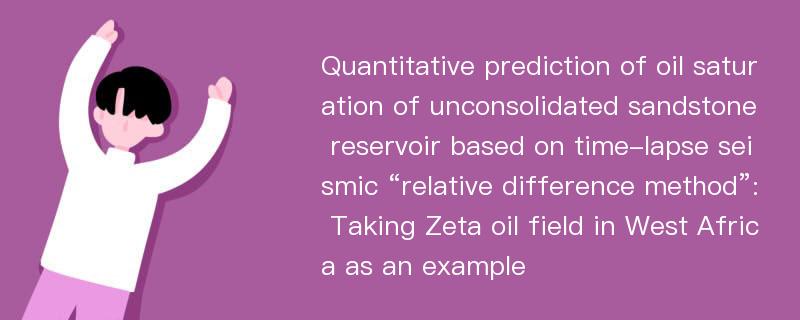
论文摘要
In view of the disadvantage that the absolute difference of time-lapse seismic(the difference between monitoring data and base data) is not only related to the change of oil saturation, but also closely related to the thickness of reservoir, a time-lapse seismic "relative difference method"(the ratio of monitoring data to base data) not affected by the thickness of reservoir but only related to the change of fluid saturation, is proposed through seismic forward modeling after fluid displacement simulation. Given the same change of fluid saturation, the absolute difference of time-lapse seismic conforms to the law of "tuning effect" and seismic reflection of "thin bed", and the remaining oil prediction method based on absolute difference of time-lapse seismic is only applicable to the reservoirs with uniform thickness smaller than the tuning thickness or with thickness greater than the tuning thickness. The relative difference of time-lapse seismic is not affected by reservoir thickness, but only related to the change of fluid saturation. It is applicable to all the deep-sea unconsolidated sandstone reservoirs which can exclude the effect of pressure, temperature, pore type and porosity on seismic. Therefore, the relation between the relative difference of time-lapse seismic and the change of fluid saturation, which is obtained from seismic forward modeling after Gassmann fluid displacement simulation, can be used to quantitatively predict the change of reservoir water saturation and then the distribution of the remaining oil. The application of this method in deep sea Zeta oil field in west Africa shows that it is reasonable and effective.
论文目录
文章来源
类型: 期刊论文
作者: LU Hongmei,XU Hai,WO Yujin,GU Ning
来源: Petroleum Exploration and Development 2019年02期
年度: 2019
分类: 工程科技Ⅰ辑
专业: 石油天然气工业
单位: Sinopec Petroleum Exploration & Production Research Institute
基金: Supported by the China National Science and Technology Major Project(2017ZX05005-001)
分类号: TE327
页码: 426-434
总页数: 9
文件大小: 852K
下载量: 29
